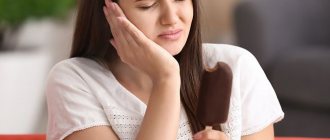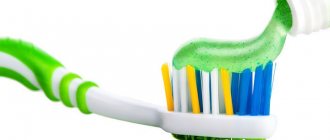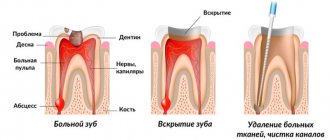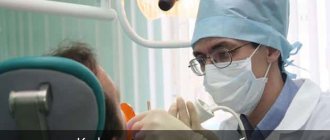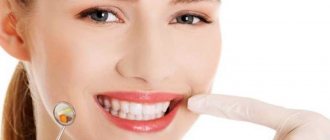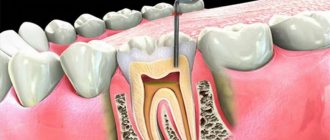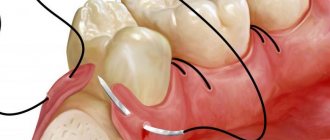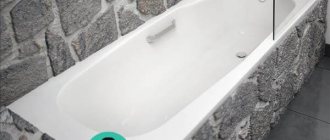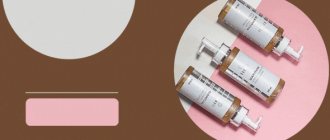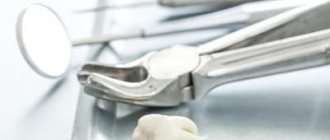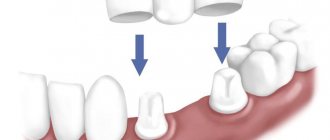A daily dental care routine (brush, floss, and rinse) is essential to keeping your smile attractive and healthy. But this is not always enough. Often people have to resort to ultrasonic cleaning by professionals at the dentist's office.
But visiting an office for professional tartar removal is only half the way to a snow-white smile; it is important to follow all the recommendations of the dentist. After cleaning, he should give instructions on how to behave in the first hours and in the following days after cleaning from dental plaque.
Why does tartar appear?
There are many reasons for the deposition of hard plaque, including:
- poor teeth cleaning at home;
- incorrectly selected brush and paste of inadequate quality;
- smoking;
- a large amount of soft food in the diet that does not require thorough chewing;
- dysfunction of the thyroid gland;
- uneven teeth and chewing food on only one side of the jaw.
Removing tartar is much more difficult, and it brings much more problems. In order to avoid possible complications in the future, professional teeth cleaning in dental offices by hygienists will help.
Professional teeth cleaning
Professional teeth cleaning is a procedure for mechanical or ultrasonic removal of tartar, plaque and pigmentation from the surfaces of teeth, as well as from hard-to-reach areas of the oral cavity. Hygienic cleaning must be done by everyone, without exception, at least 2 times a year.
But this procedure is especially useful and vital for owners of orthodontic structures in the oral cavity, such as implants, braces, and veneers. For those who wear braces, this procedure is very relevant. Since it is not possible to carry out high-quality teeth cleaning at home.
Professional cleaning is also carried out for those who decide to undergo dental treatment or enamel whitening.
Why do you need a diet?
The teeth whitening procedure involves influencing the natural or acquired shade of enamel with a special device or means for “evaporating” the dark pigment.
Subsequently, the protective layer of enamel becomes thinner. It takes about 10–14 days for it to fully recover. If the still fragile tooth enamel can be affected by dyes, then there is a high probability of staining the surface of the teeth. To prevent this result, dentists have developed a special white diet that excludes a number of “colored” foods from the diet.
Before the procedure or after its completion, the dentist gives the patient the necessary recommendations about acceptable and prohibited products after teeth whitening. Neglecting the recommendations can cause not only darkening of the enamel, but also the development of caries.
Contraindications
Teeth brushing in dentistry, as a medical procedure, has a number of contraindications:
- cardiac arrhythmia;
- colds and infectious diseases;
- diabetes;
- pregnancy;
- HIV, AIDS, hepatitis;
- increased sensitivity of teeth or inflammation of gums;
- destruction of enamel;
- childhood and adolescence.
The procedure for cleaning teeth from foreign substances, according to generally accepted standards, is carried out as follows:
- After a thorough examination of the oral cavity, the dentist identifies problem areas in the oral cavity.
- Cleans tartar using a special tool - an ultrasonic scaler. Since tooth enamel is harder than tartar, under the influence of ultrasound
- the stone collapses, but the tooth remains undamaged. Injury to the gums is minimal. For maximum patient comfort, doctors can use anesthesia in the form of special gels or sprays.
- Then pigment spots from tobacco, coffee and other products with a high dye content are removed. They can only be removed using a special device - Air Flow.
- It works by using pressure to push out abrasive materials to effectively clean the surface of your teeth.
- Fluoridation. This makes the enamel harder.
- At the final stage, the surface is polished with rubber brushes using a special paste.
In total, a complete cleaning cycle can take from 20 to 60 minutes.
Teeth whitening methods
There are several whitening methods:
- Mechanical cleaning Air-flow. It has weak whitening compared to other methods, but it also has the safest effect. Includes high pressure water, air and sodium bicarbonate abrasive. The narrow tip of the sandblaster produces a thin stream with strong pressure, through which the dentist cleans plaque from each tooth. If tartar is present, the patient is first removed with ultrasound. As a result, the enamel is cleared of impurities and becomes lighter, but the yellow pigment does not discolor. However, increased tooth sensitivity after the procedure goes away faster than with intensive whitening methods.
- Photobleaching. Application of a teeth whitening gel to the enamel, which does not begin to act until high-intensity light rays are directed at it. Under the influence of light, the composition with hydrogen peroxide and carbamide oxidizes and penetrates deeper into hard tissues, discoloring them. It is preferable to use an LED or halogen lamp instead of an ultraviolet lamp, as they emit cold light and heat should be avoided during oxidation. A course of procedures can whiten by 10, and in some cases, by 12 tones.
- Laser. Just like with photobleaching, a gel based on hydrogen peroxide is applied to the enamel, and then its properties are activated. Only in this case, the catalyst for the chemical reaction is not intense light, but a laser beam, which the doctor directs one at a time to each tooth being whitened.
- Chemical. It differs in that a stream of light or laser is not required to oxidize the bleaching composition. The reaction occurs gradually, without additional exposure. The gel is applied to the teeth and left for a while, and then removed. In this way, teeth can become whiter by 5–7 shades.
- Endobleaching. It is used in cases where the crown of the tooth darkens from the inside. Most often this happens after injury (due to hemorrhage into the pulp), due to death or removal of the nerve, due to a reaction to the filling material. Then a whitening compound is injected into the crown through a drilled hole, and the whole thing is closed with a filling. This operation is not performed on “living” teeth, only on pulpless ones.
Modern dentistry can allow a patient to get the smile of their dreams in just an hour. But you should not think that eliminating yellowness acquired as a result of smoking, drinking strong coffee and chocolate in large quantities means that after teeth whitening you can do the same thing with the same success. After treatment with bleaching compounds, enamel becomes more sensitive and vulnerable, and it requires time to recover.
In fact, the surface of the tooth is not perfectly smooth: its microrelief includes, in addition to smooth areas, hills and depressions. After bleaching, the enamel is deprived of its protein film (pellicles) and its upper uneven layer is exposed, to which new contaminants quickly “attach.” And whitening sessions are not recommended to be done frequently, as this causes the enamel to demineralize, becoming vulnerable to the formation of tartar and even cracks.
Whitening affects not only the surface of the tooth, but also the next layer of its structure. When cleaning the enamel alone, you won’t get a Hollywood smile, because yellowish dentin shines through its translucent layer. When the whitening gel oxidizes, the permeability of the enamel increases, and the composition penetrates deeper, discoloring the dentin and affecting the nerve endings located in it. Because of this, teeth react especially sharply to cold, hot liquid, acid and other irritants.
Therefore, one of the conditions for successful rehabilitation is diet. The white diet, also known as colorless, involves excluding from the diet foods and drinks that contain acid and coloring matter.
Recommendations after professional teeth cleaning
The hygienic cleaning procedure may cause increased sensitivity to cold and hot, and short-term discomfort during cleaning. This is an acceptable side effect. After ultrasonic teeth cleaning, the doctor gives individual recommendations for further actions for 2-3 days.
This plan includes, but is not limited to, customized oral care products. But the general direction of the appointments is as follows:
- purchasing a new toothbrush;
- do not forget to brush your teeth 2 times a day using a paste that reduces enamel sensitivity.
Frequently asked questions from users
How often can you have your teeth cleaned at the dentist?
The standard recommendation is to remove pigmented and mineralized deposits every six months. But the frequency varies depending on the patient's characteristics:
- if a person is scrupulous, carefully monitors hygiene and does not have bad habits, then plaque accumulates more slowly, so cleaning can be done rarely - once every year and a half;
- For smokers, lovers of black tea and strong coffee, professional hygiene is required once every six months;
- for people prone to diseases of teeth and gums, manipulation is carried out every 5-6 months;
- patients with gingivitis and periodontitis come for professional hygiene once every 3-6 months, depending on the condition of the gums and enamel;
- For patients with installed braces, dentures and implants, the procedure is performed every 4-6 months.
Also, professional hygiene is required before a planned pregnancy and orthodontic treatment.
It is recommended to remove pigmented and mineralized deposits every six months
How long after cleaning teeth from tartar can you eat?
There is no direct ban on eating. But it is better to refrain from eating and drinking for 2-3 hours. This is due to two factors:
- after cleaning, the enamel becomes porous, pigments from products are more absorbed into it;
- At the end of professional hygiene, the teeth must be covered with strengthening preparations (fluoridation or remineralization is carried out): you need to wait a couple of hours to allow the compounds to be absorbed and not damage the protective film.
Tip: To avoid hunger or thirst, eat a hearty meal before visiting the dentist.
What can you eat?
For 2-3 weeks after professional cleaning, they adhere to the so-called “white” or “transparent” diet. This type of diet excludes all foods and drinks that can stain dental tissue.
But the diet is not particularly poor. Allowed:
- side dishes: rice, oatmeal, millet, mashed potatoes, pasta;
- meat: any variety, it is advisable to prepare “soft” dishes from it - cutlets, meatballs, stews, etc.;
- white fish;
- soups and broths: white meat, cream soups;
- light vegetables: cabbage, potatoes, radishes, cucumbers, zucchini, white beans;
- neutral fruits: bananas, pears;
- berries: melon, white grapes and currants;
- simple drinks: pure still water, diluted juice from apples or light grapes, lightly brewed green tea;
- fermented milk products: cottage cheese, milk, kefir, fermented baked milk, cheese, yogurt (without food coloring);
- nuts;
- bread: white, rye, bran, gray;
- White mushrooms;
- eggs;
- sweets: honey, marshmallows without glaze, light marshmallows and marmalade, white chocolate, baked goods made from white flour, butter or sour cream.
2-3 weeks after professional cleaning adhere to a “white” diet
Eat foods and drinks at a neutral temperature: slightly warmer than room temperature. They do not cause hypersensitivity and do not irritate the gums.
What's not allowed?
During the first 2-3 weeks after professional hygiene, restrictions are imposed on all foods and drinks containing natural or artificial colors:
- drinks: coffee, black tea, red juices, compotes, fruit drinks, cocoa, hot chocolate, any soda;
- soups: tomato, with buckwheat, borscht (red and green);
- side dishes: buckwheat;
- black bread – it contains a lot of concentrated malt, which gives the baked goods a black-brown color;
- berries: blueberries, currants, mulberries, strawberries, raspberries, red grapes, blueberries, blackberries, pomegranate, cranberries, watermelon;
- vegetables: beets, carrots, pumpkin, tomatoes, red cabbage;
- fruits: orange, lemon, kiwi, grapefruit, plum, cherry, sweet cherry;
- offal: liver, heart;
- sauces: soy, ketchup, mustard, curry, etc.;
- sweets: bitter and milk chocolate, lollipops, jam, glazed cheese curds, ice cream, baked goods and confectionery with dyes, jelly or colored creams;
- seasonings: paprika, red pepper, cinnamon, nutmeg.
Avoid berries at first
Tip: If you eat something that contains pigments, rinse your mouth and brush your teeth. This will reduce the coloring effect of the product.
Also prohibited are “irritating” foods:
- excessively hard: crackers, drying, tough meat, chops, steaks, chips;
- viscous and sticky: toffee, caramel, molasses;
- acid-containing: apples, citrus fruits, juices;
- cold;
- hot;
- spicy.
Can I drink coffee?
Like any “coloring” drink, coffee is prohibited after professional cleaning. You will have to give it up for at least a day, or better yet, for the entire rehabilitation period (2-3 weeks).
It is better to give up coffee for 2-3 weeks
If you neglect this recommendation, your teeth will quickly stain and become even darker than they were before hygienic cleaning. Coffee pigments quickly penetrate into microcracks and pores in the enamel, and firmly adhere to the surface.
Coffee lovers who cannot live for several hours without an aromatic drink are advised to first dilute the coffee with milk, cool it to room temperature and drink it through a straw. And then be sure to rinse your mouth and brush your teeth.
Smoking?
Smoking, even in normal situations, harms teeth in a way that no other product or drink can. And after professional hygiene, resins accumulate even more intensely around the necks of crowns and on their surface. In addition, hot smoke dries out the mucous membrane, leading to redness and bleeding of the gums.
Therefore, a strict smoking ban is imposed in the first 3-5 days. It applies to regular cigarettes, cigars, pipes, vapes and hookahs.
However, in practice, not a single heavy smoker follows this advice: it is unrealistic to last even a day without a cigarette. Therefore, exclude them at least in the first 3-4 hours, and after each smoke break, brush your teeth.
You can't smoke for the first 3-5 days
Can I drink green tea?
At first glance, it seems that green tea cannot stain enamel, because it is almost transparent. But in fact, each variety contains tannins, which give the surface of the teeth a yellowish tint.
Therefore, dental hygienists do not recommend drinking any type of tea: green, white, herbal. True, their coloring properties are still less pronounced than those of the black variety. So once a day you can treat yourself to a glass of lightly brewed drink.
Alcohol after cleansing
There are no direct contraindications for alcohol-containing drinks. But it is better to abstain from drinking alcohol for the first day.
The type of alcohol is also taken into account. So, as a rule, you should not drink alcoholic beverages with dyes for 2-3 weeks. This:
- red and rose wines;
- cognac;
- liquor;
- low alcohol drinkers;
- whiskey;
- beer;
- gin;
- vermouth.
You are allowed to drink white wine, vodka, light martinis, and tequila. But after them, you usually need to brush your teeth and use a mouthwash.
Do not drink alcoholic beverages with dyes for 2-3 weeks
Why does my breath smell even after brushing my teeth?
An unpleasant odor (halitosis) usually occurs when there is a large accumulation of soft and hard deposits around the crowns. Therefore, the main reason for bad breath after professional hygiene is poor quality cleaning.
Typically, the dentist does not clean subgingival plaque well. It accumulates in periodontal pockets (5 mm deep) during periodontitis and periodontal disease. Such pigmented and mineralized deposits are difficult to detect, and their cleaning requires high professionalism and the use of special equipment.
In addition, it will take several visits to completely remove the stone and polish the necks of the teeth. And after professional hygiene, anti-inflammatory therapy is mandatory.
But if the gums are healthy and there are no complaints about the procedure, the following factors may be the causes of halitosis:
- poor hygiene: if the patient continues to brush his teeth irregularly, the effect of professional cleaning will quickly fade away;
- insufficient cleaning of dentures, especially removable ones: if the dentist cleans fixed dentures along with all teeth, then patients are responsible for maintaining the cleanliness of removable dentures;
- daily consumption of foul-smelling foods: garlic, onions, fish, etc.;
- inflammatory processes in teeth: deep carious cavities, cysts, pulpitis;
- pathologies of the gastrointestinal tract: stomach, liver, kidneys;
- upper respiratory tract diseases: sinusitis; frontal sinusitis, tonsillitis;
- diabetes mellitus – you will smell acetone from your breath;
- taking certain medications: antibiotics, antihistamines, to normalize blood pressure, antidepressants, etc.
Another reason is xerostomia. This is pathological dryness of the mucous membranes due to insufficient saliva production. It not only softens and moisturizes the oral cavity, but also helps get rid of bacteria, germs and heal wounds.
If bad breath persists after professional hygiene, consult a therapist, gastroenterologist, or pulmonologist
With xerostomia, saliva is almost not produced, which means that pathogenic microorganisms multiply more intensively. Their toxins, waste products and decay provoke bad breath.
Advice: If bad breath persists after professional hygiene, consult a doctor: therapist, dentist, gastroenterologist, pulmonologist. He will determine the exact cause and prescribe appropriate treatment.
Is professional teeth cleaning at home possible?
It is unrealistic to achieve an effect even slightly similar to the result from professional cleaning on your own. Clinics use special devices, tools and hygiene products that efficiently and carefully remove plaque, practically without damaging the enamel and gums.
At home, you can only improve personal hygiene and remove minor deposits. The following tools will help with this:
- Professional toothbrushes. Although mechanical brushes are not fundamentally different from each other, there are products that clean plaque better: with a special arrangement of bristles, rubberized inserts, surfaces for cleaning the tongue, etc.
- Professional pastes. Cheap products like “Colgate”, “Pearl”, “Silka”, “Blend-a-med” will not work. Take a closer look at the companies “Lacalut”, “Sensodyne”, “President”. For better plaque removal, look for highly abrasive products: gels with an RDA index of 80-100 are suitable for everyday care; for intensive whitening 1-2 times a week - with an RDA of 150-200. Such pastes are good at removing minor plaque by breaking down pigment plaques with abrasives, but they will not cope with massive deposits.
- Electric and ultrasonic toothbrushes. They break up plaque and stone better, and in addition they also polish the enamel.
- Irrigators. These are devices that clean the interdental spaces using a water jet. The devices will be especially useful for people with dentures, braces and implants.
It is forbidden to remove plaque and tartar from teeth using improvised means: tweezers, a nail file, scissors, a knife, etc. It may be possible to partially remove the deposits. But the enamel and mucous membrane will inevitably be severely damaged. As a result, caries can occur in an initially healthy unit.
It is unrealistic to achieve the effect of professional cleaning on your own.
Folk remedies for cleaning teeth, benefits and harms
Proponents of “natural medicines” criticize professional comprehensive oral care products. They claim that you can maintain hygiene, remove deposits and even get rid of diseases using folk remedies.
That's bullshit. There is no conspiracy of pharmaceutical companies to produce “harmful” toothpastes and brushes: all products undergo clinical testing, and no one will maliciously produce products that undermine health.
But home cleaning methods are at best useless, and at worst they will greatly harm your teeth. Individually or in combination, the following folk remedies for removing plaque are ineffective or harmful:
- soda;
- hydrogen peroxide;
- Activated carbon;
- citrus juice and peel;
- chalk, ash and any other abrasive;
- powdered milk;
- Coconut oil;
- calamus root;
- rose hip;
- salt – table and sea salt;
- clay;
- sulfur;
- honey;
- essential oils.
Teeth brushing is mandatory for pregnant women
Is it possible to brush your teeth during pregnancy?
During gestation, serious physical, anatomical and hormonal changes occur in a woman’s body. They, among other things, negatively affect the condition of the oral cavity. Because of this, pregnant women more often experience gingivitis, caries, and plaque accumulates more abundantly.
Therefore, brushing teeth for pregnant women is mandatory. However, there are several nuances:
- It is best to carry out professional hygiene at the stage of pregnancy planning - this will help prevent dental diseases during pregnancy and eliminate the risk to the child;
- the best time for professional cleaning during pregnancy is the second trimester: in the first weeks, any intervention can affect the formation of the baby, and in the last weeks it can provoke premature birth;
- safe types of professional hygiene for expectant mothers: sandblasting, Air Flow, ultrasound, laser, but mechanical and chemical methods should be abandoned;
- Without any problems, you can clean plaque only from the supragingival part of the teeth, but stone from periodontal pockets is removed only according to strict indications: with this type of professional hygiene, anesthesia is used, which can affect the condition of the baby and mother.
Professional oral cleaning is the best prevention of dental and gum diseases and a safe whitening method. But if you do not follow the rules of care, the effect of the procedure will disappear in a matter of days.
What can you eat after a professional teeth reading?
You can start eating almost immediately after professional cleaning. But doctors still advise waiting at least 1 hour.
If fluoridation of the dental surface has been carried out, then it is necessary to abstain from food for at least 2 hours.
Anything that does not contain food or natural dyes is allowed to be used in food. Dentists especially recommend eating more solid foods - fruits and vegetables, such as apples, as they reduce the risk of plaque forming on the surface of the teeth.
It is recommended to increase the amount of calcium-rich foods in your diet - milk, cottage cheese, kefir. But after using soft food, it is imperative to brush your teeth, rinse your mouth and use dental floss, since such food will actively clog into hard-to-reach places.
Also, to maintain the effect of brushing your teeth in the first days, it is recommended to drink mainly water, very lightly brewed tea or apple juice, but diluted with water.
Coloring products for teeth
To make your smile snow-white, you must refrain from eating food with dyes:
- natural: brewed coffee, strong tea, black currants, red wine, beets, raspberries, grape and tomato juice;
- artificial: drinks with additives, ice cream, sweets.
The color of the stain will also depend on what you eat or drink: from yellow to purple. You need to hold out for at least three days until the enamel is open and easily absorbs unnecessary components; sensitivity also increases and eating too hot, cold, sour or spicy foods will not bring you proper pleasure.
Tobacco
Smoking has a bad effect on the general condition of the teeth and the entire oral cavity. Nicotine plaque gives the enamel an unpleasant yellowness and forms a constant unpleasant odor, which is difficult to remove even with the use of rinses and sprays for fresh breath. And freshly cleaned enamel absorbs harmful resins twice as fast. Wait at least a week until a new protective layer forms, or better yet, quit smoking and go in for sports.
Advice: smokers are recommended to choose toothpastes with a whitening effect and activated carbon in the composition.
Coffee
The coffee drink contains aggressive coloring agents. You will have to give up brewed coffee for at least 3 days until the enamel is restored. If you are an avid coffee drinker and a day without coffee is like death for you, use a chicory analogue or add a large amount of milk to the drink, this will soften the reaction and avoid staining the enamel brown.
Green tea
Tea itself is an aggressive dye, and both white and green tea also fall into this category. Dentists advise drinking a non-concentrated tea drink to avoid staining. Choose unflavored tea and don't drink it too hot. All you can afford now is a small amount of tea leaves with purified water, without added sugar and lemon. The temperature of the drink should be room temperature, comfortable for tooth enamel. The restrictions will be lifted two days after the cleaning, but for now it makes sense to be patient.
Fact: Tea leaves stain teeth more than nicotine gum. After each tea drink, be sure to rinse your mouth if you cannot brush your teeth.
Fruits and vegetables
Taking vitamins is only beneficial for the body and in your case too. Dentists recommend eating hard varieties to further strengthen teeth and polish enamel.
The following will benefit: green apples, bananas, radishes, zucchini, cauliflower, potatoes and all fruits and vegetables that fall under the “white” diet. You can eat them as much as you want.
When eating foods of bright colors, remember that after eating, your enamel will become approximately the same color:
- brown - coffee, tea, chocolate;
- red - raspberries, strawberries, tomatoes, beets;
- blue - dark grapes, blackberries, blueberries;
- yellow - carrots, pumpkin, orange, apricot.
How long after brushing your teeth can you eat whatever your heart desires? Ideally - in a week.
Alcohol
When cleaning in dentistry, anesthesia is not used and a course of antibiotics is not prescribed after the procedure. There is no ban on drinking alcoholic beverages, but you should refrain from drinking red wines, low-alcohol colored drinks (Shake, Longer), cocktails containing absinthe, black rum, Blue Curacao liqueur). Also, do not drink too cold or carbonated drinks, as you may experience discomfort, especially in the first days after the procedure. Time interval up to four days.
Note: if drinking alcohol is unavoidable, give preference to white wines, white rum and gin.
Folk remedies for cleaning teeth
All the same things that are written on the packaging of toothpaste can be found in mother nature, because somehow our ancestors managed, and their teeth were stronger and healthier, unlike ours.
At home, the following have proven to work well for use:
- activated carbon for bleaching. A powder is made from one tablet and applied to the surface of the teeth; you can rub it in with your finger, or you can use a toothbrush. The main thing is to control the friction force, large particles can damage the enamel. Use no more than once a week; the procedure should not last more than a minute;
- salt. It is better to use sea food, but if it is not available, large food grade food will do. Sprinkle on your toothbrush and gently brush your teeth; it will brighten and polish tooth enamel. If you are hypersensitive, put a teaspoon of salt under your tongue; when it combines with saliva, a paste is formed, spread it over the surface of your teeth with your tongue, then rinse your mouth well;
- Baking soda is an excellent antiseptic and removes tartar well. Mix baking soda and 2 drops of lemon juice in a teaspoon and use a toothbrush to brush your teeth. After the procedure, refrain from cold and hot temperatures for two hours;
- bee products. Honeycombs remove dental plaque during chewing, and honey, being a natural healing agent, will accelerate the regeneration of gums and oral mucosa in the presence of damage.
- citrus. If you rub your teeth with lemon or orange peel, plaque will be removed, and a pleasant taste and smell will appear in your mouth.
- fruit acid. Strawberries, wild strawberries and apples are rich in them. Just crush a few berries or make applesauce, apply it to your teeth and wait a few minutes. After this, the tartar will soften and can be easily removed by brushing with a regular toothbrush.
Rinsing with herbal decoctions is effective for oral health and gum healing.
- Water rinse with tea tree oil. Add 5 drops of essential oil to a glass of water and rinse your mouth. All microbes will die, leaving a feeling of cleanliness and a pleasant smell.
- Peppermint decoction. Infuse a teaspoon of herb in a glass of boiling water for an hour, strain and use for rinsing.
- An infusion of oak bark strengthens the gums well, stopping their bleeding. For 100 grams of water, steam 2 tablespoons. Rinse morning and evening.
- Cranberry juice. It's better to do it yourself. Mash a handful of berries in a mortar, strain through a sieve and rinse your mouth. After it, the teeth will become white, the stone will dissolve, and the gums will look healthy.
What not to eat after a professional teeth reading
In the first 2-3 days after the hygiene procedure, you should completely exclude from your diet foods that irritate your teeth - everything sour, salty, sweet, cold, hot, carbonated drinks, as well as foods containing dyes:
- black and brown dyes are found in tea, coffee, Coca-Cola, Pepsi, cocoa, chocolate, soy sauce and balsamic vinegar, as well as in some berries (blueberries,
- blackberries, blueberries, black currants and black grapes);
- yellow dye is inherent in spices - mustard and curry;
- red and orange colors - red wine, ketchup, all red berries, tomatoes and their juice, beets, carrots, pumpkin and red cabbage;
- as well as all products with non-natural dyes - any carbonated drinks, candies, ice cream.
If it is not possible to give up your coffee addiction, then you can start drinking it after a few hours, but you should dilute it generously with milk and drink it through a straw.
How long should you stick to the diet?
It is advisable to observe the restriction on this list for at least two weeks until the protective layer of tooth enamel is restored.
In the future, consume foods with dyes, but in small quantities. If it is not possible to completely give up products with dyes, a slight deviation from the diet is acceptable, but only from the fourth day after teeth whitening. After eating foods and the list of restrictions, you should immediately brush your teeth and use a mouthwash.
The longer you manage to follow a white diet, the longer your teeth will remain snow-white. After whitening, teeth become even more sensitive to pigments, so dentists advise not to overuse products rich in dyes to maintain the effect.
When can you smoke after ultrasonic teeth cleaning?
Specialists are strictly prohibited from smoking after the procedure. Since as a result of the procedure, the enamel loses its protective film, the tars from tobacco smoke will penetrate even more actively into the surface layer of the teeth, and they will turn yellow in 2-3 days.
Therefore, before resuming your addiction to a bad habit, you should wait 3-4 days. It is during this period that a new protective layer will appear on the teeth.
If, however, nicotine addiction is very strong, and there is no way to tolerate it, then after each smoking it is necessary to thoroughly brush your teeth.
When can I eat
There is no prohibition on eating food immediately after the procedure. You can eat almost immediately, but you will have to take into account that for the first 2-3 days you need to avoid foods that can stain your teeth.
The fact is that during professional cleaning, a protective film is removed from the surface, the restoration of which occurs in about a couple of days. However, many doctors insist on following a certain diet for a week.
A ban on certain products with coloring properties is introduced for the next 2 days after the procedure. At this time, it is better to limit yourself to drinking clean water and consuming neutral-colored foods that cannot stain the enamel of the affected tooth.
It is important to remember that after each meal you need to rinse your mouth thoroughly or brush your teeth. If there are fractions stuck between the teeth, you need to use a special thread.
Alcohol after brushing teeth
Doctors do not make a categorical ban on use. But they still advise you to give up this addiction completely, or wait a few days after the procedure. And they advise you to avoid drinks that contain dyes or cause discomfort (for example, cold drinks). It is worth limiting your use:
- red wines – high content of natural pigments;
- low-alcohol drinks and energy drinks in cans containing unknown chemicals that give very bright colors to liquids;
- Avoid drinking very cold drinks.
The effect of alcohol on the body after dental treatment
There are various, very important reasons why you should give up alcoholic beverages in the coming days after dental treatment :
- Alcohol thins the blood and increases blood pressure, so alcohol-containing drinks can cause gum bleeding, which is especially scary when a tooth is removed.
- Alcohol irritates the oral mucosa, which has a negative effect on wound healing.
- When a person drinks alcohol from a bottle (for example, beer), a certain vacuum is formed in the oral cavity, which can cause a breakdown of a blood clot that “seals” the wound at the site of an extracted tooth, which can lead to infection, blood poisoning, and gum rotting and bone tissue.
Many patients claim that drinking alcohol after dental treatment helps with pain relief, but this opinion is completely wrong. Alcohol-containing drinks not only do not provide an analgesic effect, but can also nullify the effect of the anesthesia used by the doctor or reduce the effect of prescribed medications.
You also need to understand that anesthesia and alcoholic drinks are perceived by the body as a set of certain chemicals , the interaction of which can cause unpredictable reactions or give side effects. In addition, the simultaneous use of alcohol and medications (anesthesia for dental treatment) places too much stress on the heart and liver, which can lead to relapse of chronic diseases.
From all of the above, we can conclude that alcohol after dental treatment is strictly contraindicated . Therefore, we recommend postponing the feast a little or at least giving up strong drinks. If the holiday cannot be rescheduled, then, if possible, make an appointment with the dentist after the feast. Our dentistry in China, operating at the Heihei Sino-Russian Friendship Hospital, invites everyone to sign up for dental treatment at any convenient time , while we offer the most pleasant and affordable prices on the market.
Rules for oral care after brushing
Experts highlight several points for oral care, the observance of which will help maintain and prolong the results obtained:
For one to two weeks, you should use only a soft toothbrush. It is necessary to clean 2 times a day, and if possible, after each meal. After this period, it can be replaced with a medium-hard brush. Which needs to be changed once every 2-3 months. Also, on the advice of a doctor, you should use high-quality toothpaste, priority should be given to toothpastes for sensitive teeth. It is imperative to use additional oral hygiene products. Among them:
- floss;
- irrigators;
- dental brushes.
All this equipment will allow for better cleaning of dental surfaces.
It is imperative to visit a hygienist at least 2 times a year. People wearing braces, implants and other structures should visit the dentist twice as often - 3-4 times a year.
Consumer Reviews
Altamira about Asepta mouthwash (otzovik.com):
“I rarely use mouthwashes because I don’t see any particular need for them. But recently I encountered the problem of gum inflammation; they hurt terribly and caused discomfort not only when eating, but also while sleeping. At the dentist’s appointment, the doctor advised me to use Asepta mouth rinse, as it not only reduces inflammation, but also protects the gums from bleeding, and also prevents the occurrence of caries.
Having bought this mouthwash at the pharmacy and tried it several times, I was amazed. It really reduced gum inflammation and also left the mouth pleasantly fresh.
The packaging of this product is very convenient, made of transparent blue plastic, so you can see how much product is left. I was also pleasantly surprised that the kit includes a measuring cap; it fits onto the lid and won’t get lost; it’s convenient to use to measure the required dosage.
The consistency of the product is liquid and transparent, and has a slight menthol aroma. The taste of the rinse is not as strong as some, and the mouth does not itch after using it. I can’t say anything about protection against caries, since I have been using this product for only a short time. Nevertheless, it provides excellent protection to the gums, since after several uses the gums stopped bleeding and hurting.
If you are experiencing gum problems, then definitely give it a try.”
Mammary about Asept toothpaste (irecommend.ru):
“My husband was prescribed Asepta toothpaste by his dentist for gingivitis (in combination with other treatment). At first, I advised him to take not Asepta, but Parodontax, for its richer herbal composition. But he bought Asepta, and when I tried it myself, I was pleasantly surprised by the cleaning quality of this paste.
"Asepta" is a therapeutic and prophylactic toothpaste from JSC "Vertex", positioned as effective for gingivitis and periodontitis. In a laminated tube 75 ml. Cost 136 rubles. The paste has a light aroma of herbs and menthol, light green color, and a fairly thick consistency. I’ve read complaints about separation into liquid and solid components, but I haven’t observed this myself (the paste was bought at a pharmacy, with a normal expiration date). In addition, the paste foams well, no matter what they say about it, I really liked this paste.
This paste does not contain lauryl/laureth sulfate, like most common toothpastes. Among the useful components, one can note extracts of sage, calendula and St. John's wort, as well as papain. Papain is a plant enzyme that effectively brightens tooth enamel, commonly used in the food industry.
What I like most is the feeling of cleanliness in my mouth after brushing. It is somewhat different from the sensations that previous toothpastes left. And whitening is also present, and coupled with the prevention of gum disease, it’s just wonderful!
In general, I increasingly like Vertex products (besides this paste, I use several other products from this company, for example, the wonderful intimate gel Ginocomfort-gel from Vertex, the inexpensive and effective antibiotic Azithromycin Vertex, the regenerating ointment Dexpanthenol Vertex).”
Key benefits of a transparent diet:
- Allows you to preserve the results of home and office whitening for a long time;
- There is a chance that you can kill two birds with one stone in this way: reduce weight and preserve the newly acquired snow-white color of the enamel;
- During the diet, you will have to eat more natural foods, which will also have a positive effect on your well-being.
The disadvantages of the white diet are as follows:
- You will have to pay more attention to what you eat and select foods more carefully. This requires willpower and patience.
- It is more difficult to make a balanced diet; there may be a shortage of useful elements, so it is important to discuss your diet with a specialist.
Otherwise, the white diet is a healthy and effective measure. And if you follow it correctly, you can not only maintain your smile, but also improve the general condition of the body, although, of course, the main attention should be focused on the teeth.
Additional measures to help maintain whiteness
A clear diet is a very effective way to prolong the effects of any whitening procedure, but it is not enough on its own.
Here are some helpful tips to help you maintain a beautiful smile for as long as possible:
- Be sure to use dental floss to clean the space between your teeth. A toothbrush is ineffective here, and stuck food promotes the growth of bacteria, the appearance of caries and tartar.
- Extend your brushing routine by three to five minutes. Use a quality toothpaste and mouthwash that contains fluoride.
- Women who use lipstick and lip gloss are advised to discard them after the procedure.
If you follow all the recommendations and use the right products after teeth whitening, the results of the procedure can last up to two years. This will not only save money on repeated whitening, but will also preserve the health of the teeth, since any lightening, even a little, injures the enamel, making it more porous and sensitive. With careful care, your teeth will be able to recover well before the next session.
Sources:
- Study of the clinical effectiveness of the use of therapeutic and prophylactic agents of the ASEPTA series in the treatment of inflammatory periodontal diseases in children and adolescents (I.V. Klimova) Irina Vladimirovna Klimova, Candidate of Medical Sciences, Associate Professor of the Department of Pediatric Dentistry, Novosibirsk State Medical University. Department of Pediatric Dentistry, Novosibirsk State Medical University.
- Clinical and laboratory assessment of the influence of domestic therapeutic and prophylactic toothpaste based on plant extracts on the condition of the oral cavity in patients with simple marginal gingivitis. Doctor of Medical Sciences, Professor Elovikova T.M.1, Candidate of Chemical Sciences, Associate Professor Ermishina E.Yu. 2, Doctor of Technical Sciences Associate Professor Belokonova N.A. 2 Department of Therapeutic Dentistry USMU1, Department of General Chemistry USMU2
- Report on the determination/confirmation of the preventive properties of personal oral hygiene products “ASEPTA PLUS” Remineralization doctor-researcher A.A. Leontyev, head Department of Preventive Dentistry, Doctor of Medical Sciences, Professor S.B. Ulitovsky First St. Petersburg State Medical University named after. acad. I.P. Pavlova, Department of Preventive Dentistry
- Clinical studies of antisensitive toothpaste “Asepta Sensitive” (A.A. Leontyev, O.V. Kalinina, S.B. Ulitovsky) A.A. LEONTIEV, dentist O.V. KALININA, dentist S.B. ULITOVSKY, Doctor of Medical Sciences, Prof. Department of Therapeutic Dentistry, St. Petersburg State Medical University named after. acad. I.P. Pavlova
- The role of anti-inflammatory rinse in the treatment of periodontal diseases (L.Yu. Orekhova, A.A. Leontyev, S.B. Ulitovsky) L.Yu. OREKHOVA, Doctor of Medical Sciences, Prof., Head of Department; A.A. LEONTIEV, dentist; S.B. ULITOVSKY, Doctor of Medical Sciences, Prof. Department of Therapeutic Dentistry of St. Petersburg State Medical University named after. acad. I. P. Pavlova
- Report on determining/confirming the preventive properties of toothpaste “ASEPTA PLUS” COFFEE and TOBACCO Author: doctor-researcher A.A. Leontyev, head Department of Preventive Dentistry, Doctor of Medical Sciences, Professor S.B. Ulitovsky. First St. Petersburg State Medical University named after. acad. I.P. Pavlova, Department of Preventive Dentistry
- Report on determining/confirming the preventive properties of commercially produced personal oral hygiene products: Asepta toothpaste used in combination with Asepta mouthwash and Asepta gum balm Head. Department of PFS Doctor of Medical Sciences Professor S.B. Ulitovsky St. Petersburg State Medical University named after Academician I.P. Pavlova. Faculty of Dentistry. Department of Preventive Dentistry.
